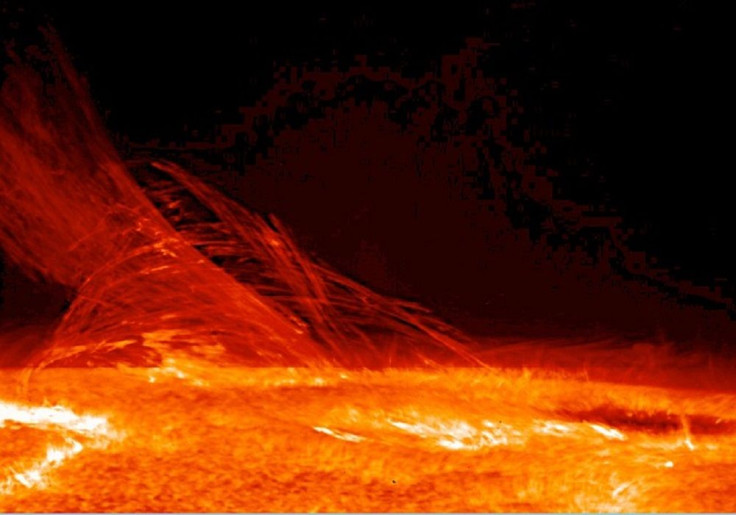Milky Way’s 'Boring' Red Star Is Actually Active, Shoots Massive Flares
KEY POINTS
- An M class star once thought to be tame is actually very active with solar flares
- The ultraviolet observations by Hubble revealed the flares
- Although considered cooler, M stars are also prone to solar flares
A nearby star once thought to be quiet and "boring" is actually quite intense. Researchers have found that it emits massive solar flares.
Most of the planets in the Milky Way galaxy orbit a class of low-mass red stars called M stars, which are fainter and cooler than the other types of stars. One particular M star, GJ 887, is one of the brightest M stars in the sky and a 27-day optical observation using NASA's Transiting Exoplanet Survey Satellite (TESS) had found no detectable flares, suggesting that GJ 887 is a tame star that could provide gentle space conditions for its planets.
Recently, a team of researchers found that GJ 887 may not be as hospitable and calm as it seems.
In a recently published research note in the American Astronomical Society, a team of researchers scoured Hubble Space Telescope archives and found that GJ 887 actually is quite active, with two high-contrast flares occurring within just 2.8 hours of ultraviolet Hubble observations.
"Solar scalings indicate these flares were X-class or larger events, generally associated with coronal mass ejections on the Sun," the researchers wrote.
Among the types of flares, X-class flares are said to be the largest explosions and if directed at Earth, they could create long-lasting radiation storms that can cause damages to satellites, communication systems and even power grids. Only recently, the sun emitted its most powerful flare since 2017 but it was only an M-class solar flare and was not directed at the Earth.
According to the researchers, hundreds of these massive flares likely occurred during the TESS observations but were not registered because they produced optical contrasts that are too small to be detected. So it was only through Hubble's ultraviolet observations that they were observed.
"It is fascinating to know that observing stars in normal optical light (as the TESS mission does) doesn't come close to telling the whole story," astronomer and study co-author Evgenya Shkolnik of Arizona State University said in a news release. "The damaging radiation environment of these planets can only fully be understood with ultraviolet observations, like those from the Hubble Space Telescope."
Such characteristics are actually quite common among M stars. Although they are deemed to be cooler and fainter, they are also prone to flares that can affect the planets orbiting them. As demonstrated by the researchers' findings, their flare activity is not always apparent.
Although this means that GJ 887 may not be as "boring" as once thought, it could also mean that its environment may not be as ideal for its surrounding planets.

© Copyright IBTimes 2024. All rights reserved.





















